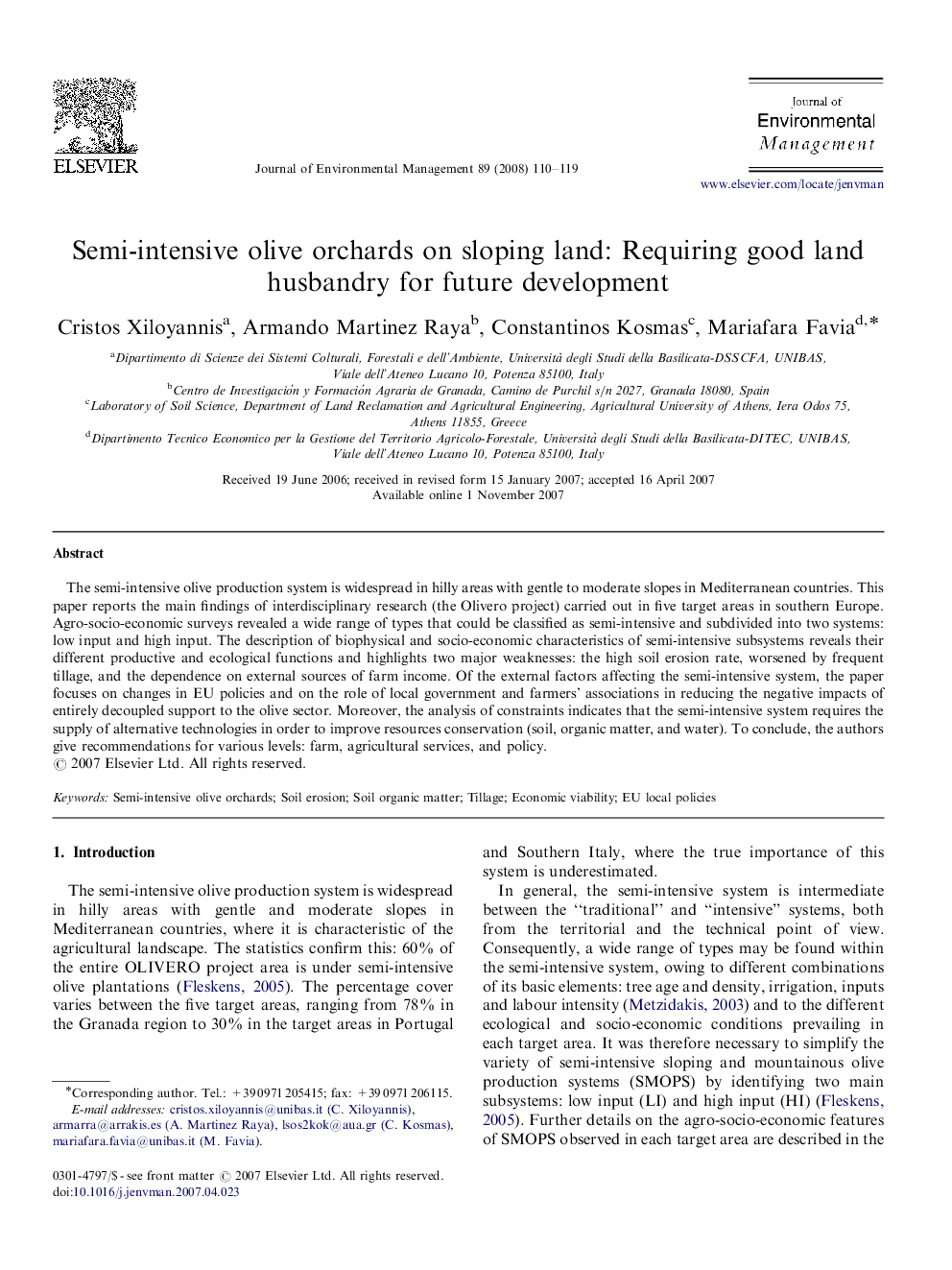| Article ID | Journal | Published Year | Pages | File Type |
|---|---|---|---|---|
| 1057619 | Journal of Environmental Management | 2008 | 10 Pages |
The semi-intensive olive production system is widespread in hilly areas with gentle to moderate slopes in Mediterranean countries. This paper reports the main findings of interdisciplinary research (the Olivero project) carried out in five target areas in southern Europe. Agro-socio-economic surveys revealed a wide range of types that could be classified as semi-intensive and subdivided into two systems: low input and high input. The description of biophysical and socio-economic characteristics of semi-intensive subsystems reveals their different productive and ecological functions and highlights two major weaknesses: the high soil erosion rate, worsened by frequent tillage, and the dependence on external sources of farm income. Of the external factors affecting the semi-intensive system, the paper focuses on changes in EU policies and on the role of local government and farmers’ associations in reducing the negative impacts of entirely decoupled support to the olive sector. Moreover, the analysis of constraints indicates that the semi-intensive system requires the supply of alternative technologies in order to improve resources conservation (soil, organic matter, and water). To conclude, the authors give recommendations for various levels: farm, agricultural services, and policy.
